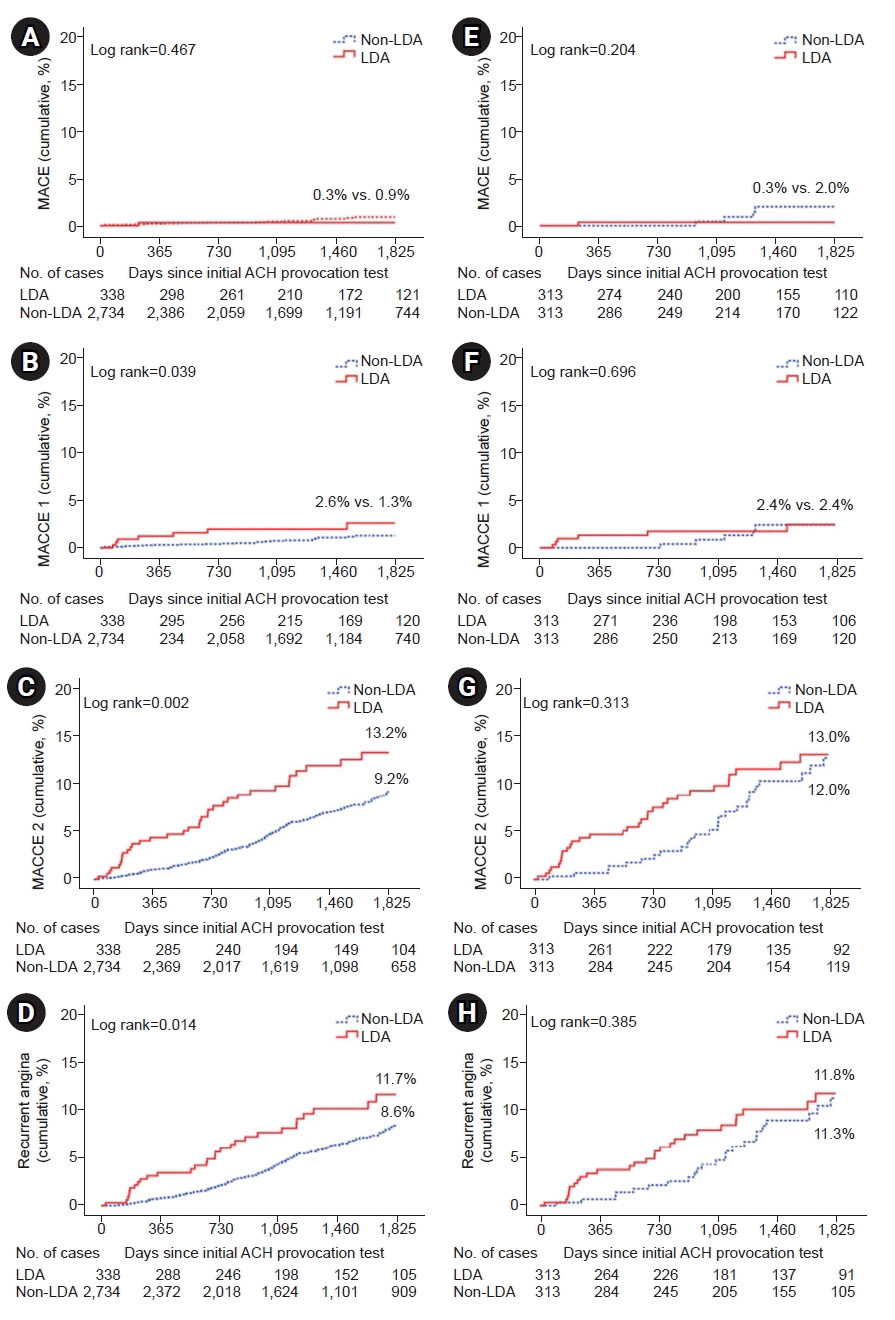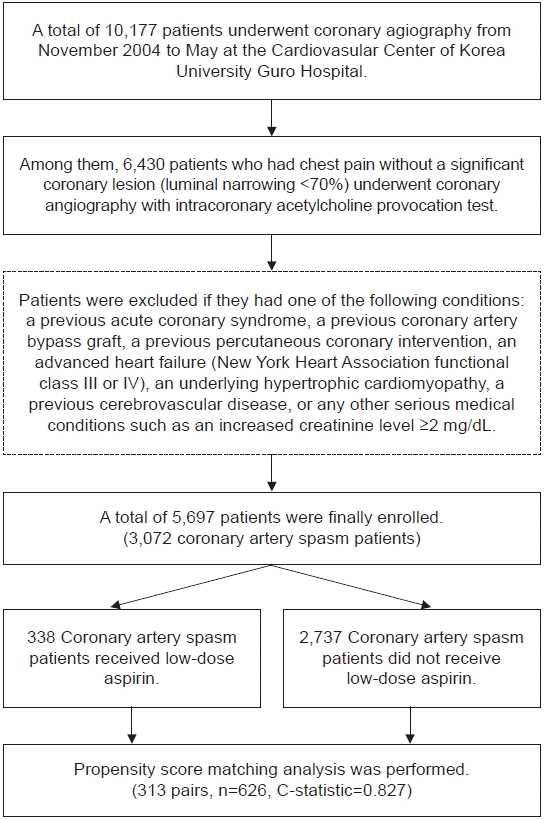1. Picard F, Sayah N, Spagnoli V, Adjedj J, Varenne O. Vasospastic angina: a literature review of current evidence. Arch Cardiovasc Dis. 2019; 112:44–55.

2. Stern S, Bayes de Luna A. Coronary artery spasm: a 2009 update. Circulation. 2009; 119:2531–4.
3. Yasue H, Nakagawa H, Itoh T, Harada E, Mizuno Y. Coronary artery spasm: clinical features, diagnosis, pathogenesis, and treatment. J Cardiol. 2008; 51:2–17.

4. Park JY, Rha SW, Poddar KL, Ramasamy S, Chen KY, Li YJ, et al. Impact of low-dose aspirin on coronary artery spasm as assessed by intracoronary acetylcholine provocation test in Korean patients. J Cardiol. 2012; 60:187–91.

5. Choi BG, Park SH, Rha SW, Park JY, Choi SY, Park Y, et al. Five-year clinical outcomes in patients with significant coronary artery spasm: a propensity score-matched analysis. Int J Cardiol. 2015; 184:533–9.

6. Chen KY, Rha SW, Li YJ, Poddar KL, Jin Z, Minami Y, et al. Peripheral arterial disease is associated with coronary artery spasm as assessed by an intracoronary acetylcholine provocation test. Clin Exp Pharmacol Physiol. 2009; 36:e78–82.

7. Chen KY, Rha SW, Li YJ, Poddar KL, Jin Z, Minami Y, et al. Impact of hypertension on coronary artery spasm as assessed with intracoronary acetylcholine provocation test. J Hum Hypertens. 2010; 24:77–85.

8. Li YJ, Hyun MH, Rha SW, Chen KY, Jin Z, Dang Q, et al. Diabetes mellitus is not a risk factor for coronary artery spasm as assessed by an intracoronary acetylcholine provocation test: angiographic and clinical characteristics of 986 patients. J Invasive Cardiol. 2014; 26:234–9.
9. Mishra PK. Variations in presentation and various options in management of variant angina. Eur J Cardiothorac Surg. 2006; 29:748–59.

10. Miwa K, Kambara H, Kawai C. Effect of aspirin in large doses on attacks of variant angina. Am Heart J. 1983; 105:351–5.

11. Cutlip DE, Windecker S, Mehran R, Boam A, Cohen DJ, van Es GA, et al. Clinical end points in coronary stent trials: a case for standardized definitions. Circulation. 2007; 115:2344–51.
12. Patrono C, Garcia Rodriguez LA, Landolfi R, Baigent C. Low-dose aspirin for the prevention of atherothrombosis. N Engl J Med. 2005; 353:2373–83.

13. Weisman SM, Graham DY. Evaluation of the benefits and risks of low-dose aspirin in the secondary prevention of cardiovascular and cerebrovascular events. Arch Intern Med. 2002; 162:2197–202.

14. Berger JS, Brown DL, Becker RC. Low-dose aspirin in patients with stable cardiovascular disease: a meta-analysis. Am J Med. 2008; 121:43–9.






 PDF
PDF Citation
Citation Print
Print




 XML Download
XML Download